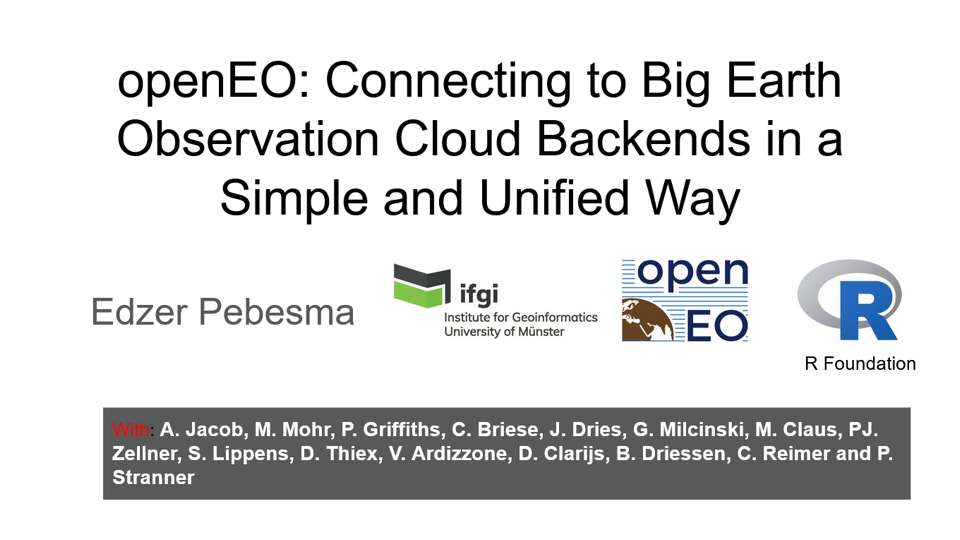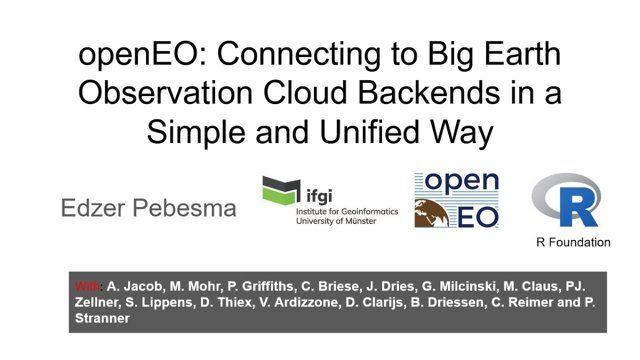OpenEO project was initiated as a cloud solution for data storage and computation to address the local analytical challenges for the ever-going Earth Observation data. To this end, openEO develops an open application programming interface (API) that connects clients like R, Python and JavaScript to big Earth Observation cloud back-ends in a simple and unified way. With such an API, each client can work with every back-end, and it becomes possible to compare back-ends in terms of capacity, cost, and results (e.g. for validation, reproducibility, etc.).
Speaker: Prof. Dr. Edzer Pebesma
Prof. Dr. Edzer Pebesma is the director of the Institute for Geoinformatics and the leader of the spatio-temporal modelling lab at University of Muenster. He is an active supporter for e-Science and reproducible research. He has co-authorised the book Applied Spatial Data Analysis with R (2nd. ed.) and is the Co-Editor-in-Chief for the Journal of Statistical Software.
Video
Presentation

Questions and Answers
How are the backends maintained on OpenEO? Backends were developed by the providers but they were built on open source stack. For instance Vito uses geopySpark, UTC uses mostly Xarray Dask, and URQ uses opendata cloud.
This answers my question.
Thank you for your feedback
Where are data stored and how are they merged to work with vito, google earth engine, etc? Data stay where they are. We bring the computation to the data. To centralise the data, there is no way around than moving them together, which is not an easy task. It is thus generally not encouraged to do so unless it is only for a small area.
This answers my question.
Thank you for your feedback
Is it right that OpenEO does not have the knowledge about the data/resources availability in the backends? Right now, the aggregator does this sort of job. We have the openEO cloud to check the data and processes in the backends and match them for the users. But you can have a lower level control if you want to.
This answers my question.
Thank you for your feedback
How do you seen openEO in 10 years, especially for the cost concern? I am happy to think about it. We have been working on the project for five years and have achieved significant progress. There could be commercial users interested in the platform in the future. The price is expected to relatively low. However the administrative hurdle can be something challenging to circumvent.
This answers my question.
Thank you for your feedback
I think most users who are interested in big data care for performance. I think we are drastically in need of a performance theory, what do you think? Good idea. I agreed that such a theory is going to be useful. However, I can imagine it will require a lot of expertise from varied domains to accomplish a task as such. It is not an easy problem to solve.
This answers my question.
Thank you for your feedback
There is an openEO call for proposals, correct? We're looking for early adopters, people who want to try out things on the platform.
This answers my question.
Thank you for your feedback




